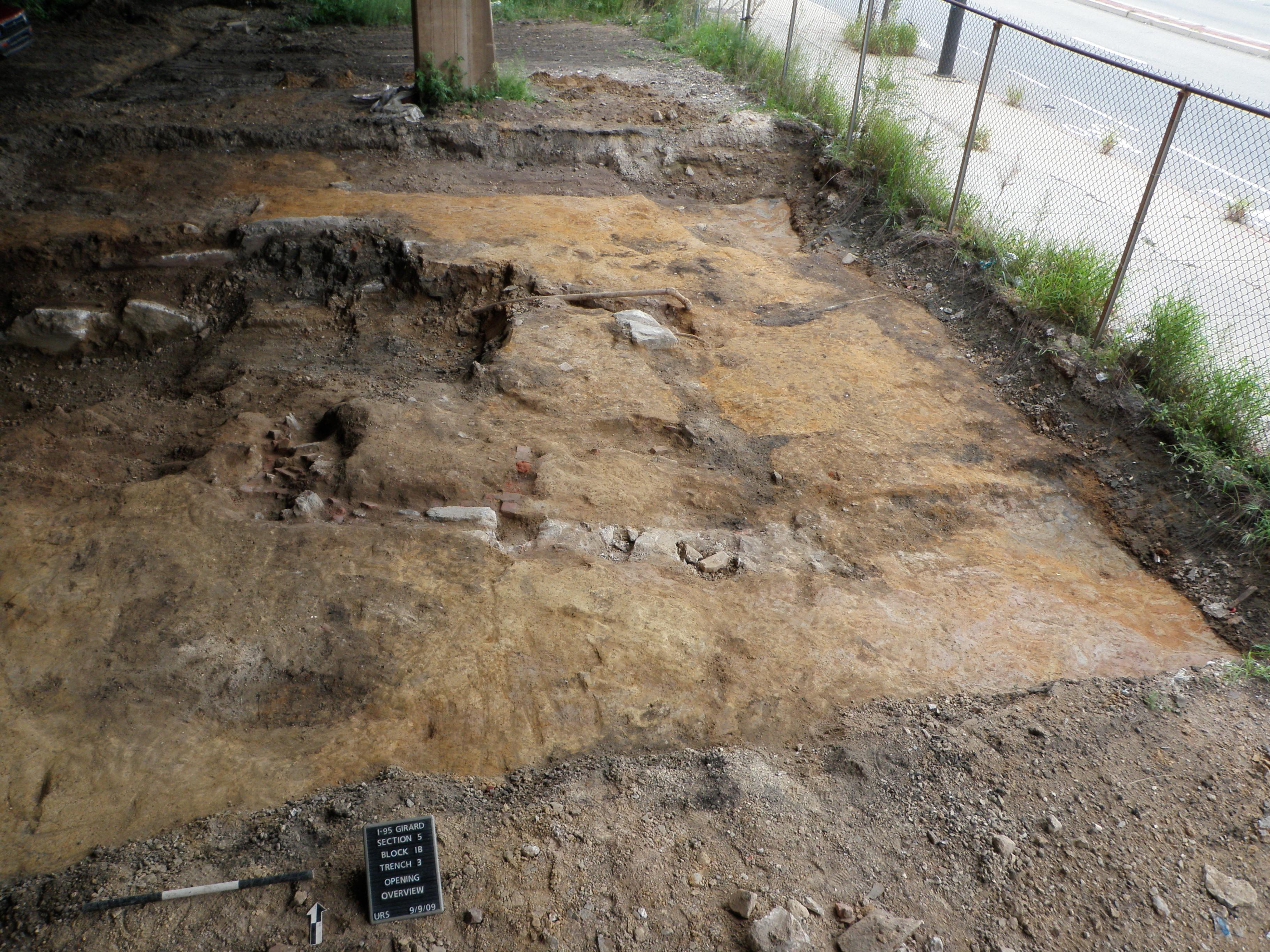The Shackamaxon #3 Site was originally tested in 2010 and subjected to more intensive documentation in 2013. This pre-contact occupation was identified beneath the I-95 viaduct, in the block bounded by Delaware Avenue, Palmer Street, Salmon Street, and Montgomery Avenue. Like other pre-contact sites in this vicinity, artifacts comprising this occupation were impacted to some extent by the residential and commercial development of the neighborhood in the nineteenth century and the construction of I-95 in the twentieth century. Intact pre-contact artifact deposits that did survive were preserved in undisturbed soil horizons within historic-period backyard spaces.
| Site Name | Shackamaxon #3 |
| PASS# | 36PH0221 |
| Image | 1 image feature overview |
| Dates of Excavation | 2009-2014 |
| Phase of Excavation | Phase I, II, and III |
| Number of Units | 94 |
| Approximate Number of Features Identified | 2 |
| Associated Periods | Pre-contact: Middle Archaic to Early Woodland period |
| Site Acreage | Approximately 0.62 acres |
Geomorphological evaluations of these intact soils suggest that the pre-contact occupation was established on a gently sloping toe- or footslope, adjacent to a wetland or low-order intermittent stream—a landform setting very similar to the nearby Shackamaxon #2 Site. Artifacts associated with this site were recovered predominantly from partially truncated plowzone (Ap-horizon) soils and intact upper subsoil (E-horizon) deposits exposed beneath 1 foot or less of fill overburden. Because of historic-period impacts, pre-contact artifacts were not recovered in a single, unbroken distribution, but rather were confined to two clusters approximately 80 feet apart.
What Did the Archaeological Excavation Reveal?
Excavations within this site resulted in the recovery of several hundred pre-contact lithic artifacts, but no evidence of pottery. Artifact deposits consisted primarily of tool-manufacturing debris and scattered fire-cracked rock (FCR). In addition, a tool kit consisting of 20 artifacts was also found. Specific tools include four projectile points (bifurcate, stemmed varieties, Orient Fishtail), multiple bifaces, a chert side-scraper, two snapped scrapers, and a groundstone celt. All of the tools show edge damage consistent with heavy use, and bear little evidence of edge sharpening/rejuvenation.
Two pre-contact features were identified and documented within this occupation, including a concentration of eight argillite blades—likely representing a tool cache—and a single partially impacted hearth feature. Wood charcoal recovered in association with the hearth was submitted for carbon-14 analysis and returned a median calibrated date of 3563 B.C. This result makes the Shackamaxon #3 Site the oldest carbon-dated site found in Philadelphia to date.
Despite the age of the recovered hearth feature, the presence of a bifurcate projectile point within this site suggests that parts of the occupation could be significantly older. Points like the one found here suggest that the earliest occupation of this location might date to the Early or Middle Archaic culture period, perhaps between 7000 and 6000 B.C.
